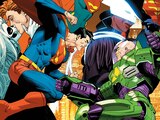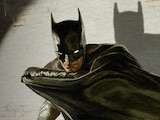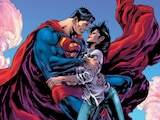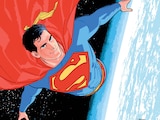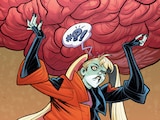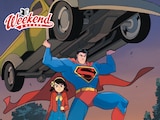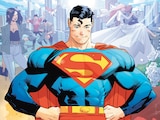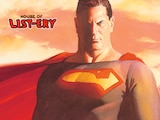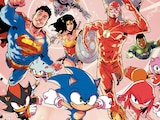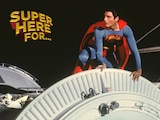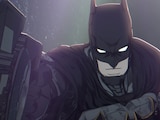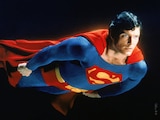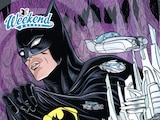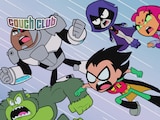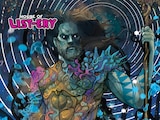
This week, the eagerly awaited Justice League: War hit stores nationwide. The latest in Warner Bros.’ successful and highly regarded series of animated movies set within the DC Universe, Justice League: War is something of a follow-up to the last animated film, Justice League: The Flashpoint Paradox and will share a continuity with many of the upcoming DC Universe animated movies, including this spring’s Son of Batman.
Justice League: War is an adaptation of Justice League: Origin by Geoff Johns and Jim Lee. It’s an appropriate choice for a movie meant to lay the groundwork for a bigger universe of films. After all, Justice League: Origin did much the same thing to all of DC Comics.
As many fans know—but not all, we’ve picked up quite a few new ones over past couple of years—two years ago DC Comics reset the numbering on all of their monthly comics in what’s known as DC Comics – The New 52. In September of 2011, every DC comic book set within the DC Universe started over with a new issue #1. It was an unprecedented move, but when you look at the where the universe was at the time, you can understand why it was made. The previous Justice League series, Justice League of America, was at issue #60 at the time, and it was actually one of DC’s “younger” perennials. Batman was at issue #713, Detective Comics was at #881 and Action Comics was at #904.
At the same time, Christopher Nolan’s revised take on the Dark Knight was winning over legions of new Batman fans, and a new Superman film was on its way. Interest in comics and graphic novels had never been higher, yet the medium was anything but friendly to new or lapsed fans when it came to monthly super hero books. The New 52 was an opportunity to change that, but its success would depend on the right story.
It would have been easy to have gone with a revisionist take on the Justice League, but wisely, that’s not the approach Johns and Lee took. What works so well about Justice League: Origin is how relatively straightforward it is. While the Justice League’s roster has traditionally been ever evolving (the lineup in the final issue of 2011’s Justice League of America included characters like Jesse Quick, Jade, Mikaal Tomas’ Starman and Congorilla—not exactly the DC Universe’s big guns), Origin restored the Justice League to what it’s meant to be—a dream team of the most popular and beloved super heroes in the world: Superman, Batman, Wonder Woman, Green Lantern, the Flash, Aquaman and Cyborg. (In Justice League: War, Aquaman has been swapped out in favor of Shazam!, but other than that, the lineup is identical.)

Unfortunately, you won't see this giddily awesome panel brought to life in Justice League: War.
The story’s villain is the destructive Darkseid, and the threat is cataclysmic in scale. To save the world, the planet’s most powerful heroes must unite and learn to work together, which they do after some conflict. Ultimately, they each utilize their unique strengths and are triumphant. As we said, the story itself is exciting, but pretty straightforward. Thanks to Johns’ rich dialogue and thorough understanding of these characters and Lee’s spectacular, large-scale art, the comic reads quite like a movie (another reason it adapts so well). It’s exactly what you want to reignite a universe and draw new readers in the process. You don’t need to know who Darkseid is or the history or origins of any of the characters. Anyone who has a basic idea who these super heroes are can pick this book up and read it. It’s the ultimate first comic. It’s the origin of a universe, of a team, of a new comic book lineup and potentially of a lifetime of reading comic books.
The fact that this story was selected to also build a new animated continuity is testament to its success. That the second film in this continuity is a Batman tale based on a Grant Morrison storyline written prior to The New 52 shows how well Johns and Lee set the stage for their fellow creators—these characters’ stories could go nearly anywhere after its conclusion, even in directions they didn’t within the comics.

Justice League: Origin didn’t seek to revitalize or redefine its subject. (Johns saved that for Aquaman and Green Lantern, and Lee for Superman Unchained.) It may have lacked the zeitgeist of the since-released Forever Evil, Throne of Atlantis or Batman’s Court of Owls. However, it’s a great comic to suggest to first-time comic book readers. Which means, if you’ve seen Justice League: War and other DC Entertainment films like The Dark Knight and Man of Steel, and you’re interested in delving into the world of comics, Justice League: Origin is a good starting point.
A word of warning, however. You, like millions of fans worldwide, may just find yourself hooked.

